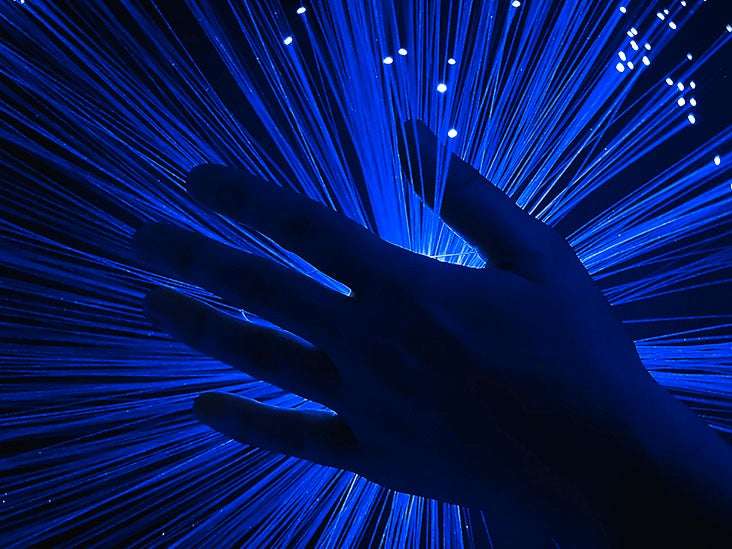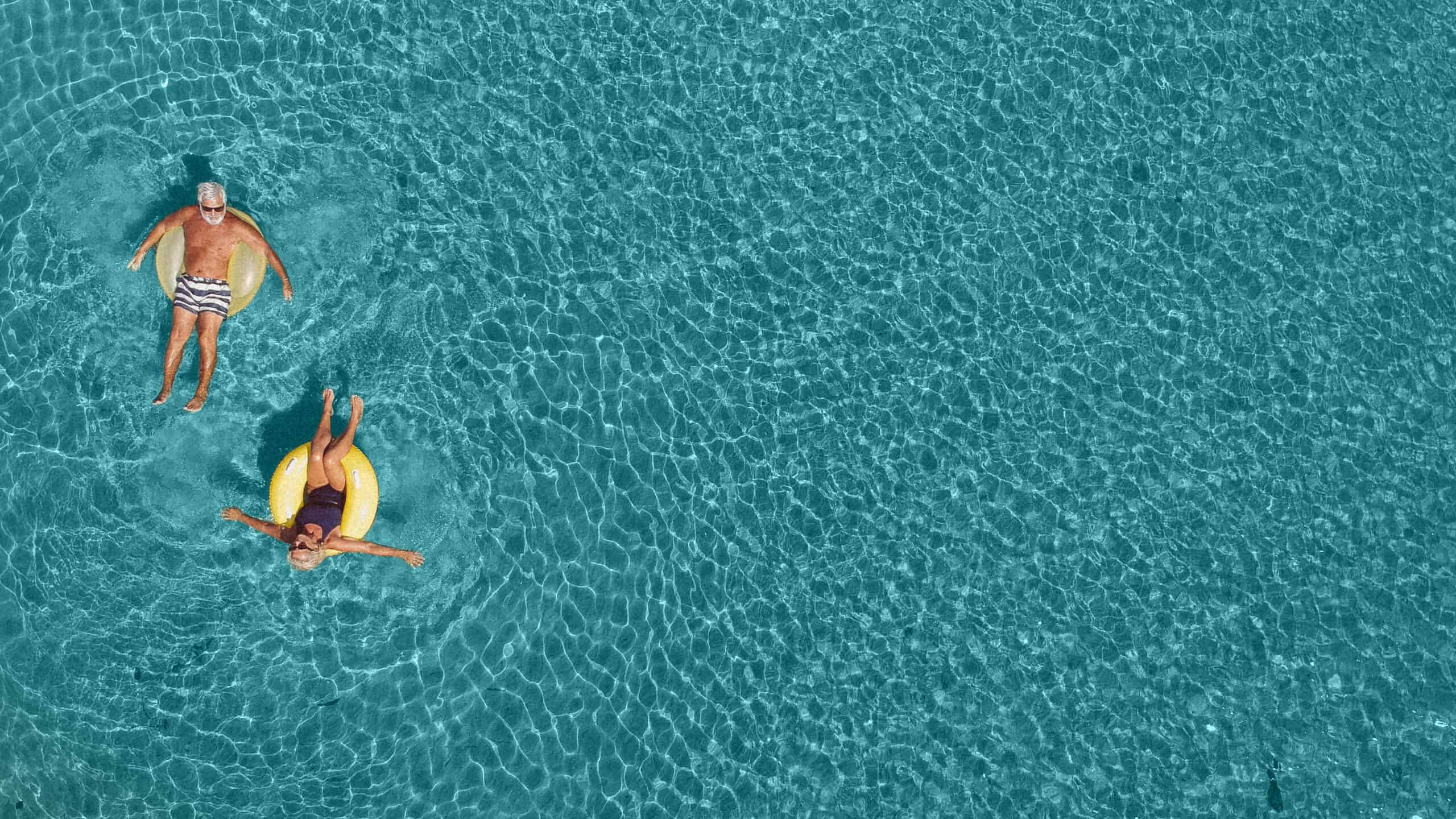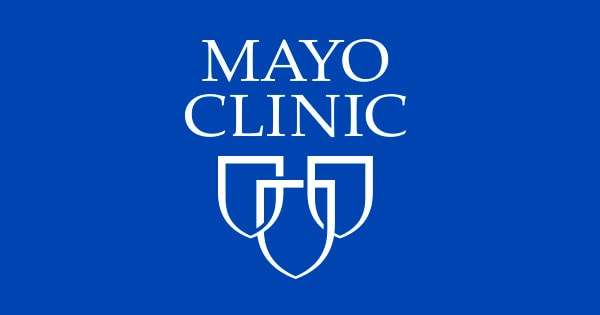Eye movement desensitization and reprocessing (EMDR) is a fairly new, nontraditional type of psychotherapy. It’s growing in popularity, particularly for treating post-traumatic stress disorder (PTSD). PTSD often occurs after experiences such as military combat, physical assault, rape, or car accidents.
Although research continues, EMDR remains controversial among some health care professionals.
At first glance, EMDR appears to approach psychological issues in an unusual way. It does not rely on talk therapy or medications. Instead, EMDR uses a patient’s own rapid, rhythmic eye movements. These eye movements dampen the power of emotionally charged memories of past traumatic events.
What Can You Expect From EMDR?
An EMDR treatment session can last up to 90 minutes. Your therapist will move their fingers back and forth in front of your face and ask you to follow these hand motions with your eyes. At the same time, the EMDR therapist will have you recall a disturbing event. This will include the emotions and body sensations that go along with it.
Gradually, the therapist will guide you to shift your thoughts to more pleasant ones. Some therapists use alternatives to finger movements, such as hand or toe tapping or musical tones.
People who use the technique argue that EMDR can weaken the effect of negative emotions. Before and after each EMDR treatment, your therapist will ask you to rate your level of distress. The hope is that your disturbing memories will become less disabling.
Although most research into EMDR has examined its use in people with PTSD, EMDR is sometimes used experimentally to treat many other psychological problems. They include:
- Panic attacks
- Eating disorders
- Addictions
- Anxiety, such as discomfort with public speaking or dental procedures
How Effective Is EMDR?
More than 20,000 practitioners have been trained to use EMDR since psychologist Francine Shapiro developed the technique in 1989. While walking through the woods one day, Shapiro happened to notice that her own negative emotions lessened as her eyes darted from side to side. Then, she found the same positive effect in patients.
EMDR appears to be a safe therapy, with no negative side effects. Still, despite its increasing use, mental health practitioners debate EMDR’s effectiveness. Critics note that most EMDR studies have involved only small numbers of participants. Other researchers, though, have shown the treatment’s effectiveness in published reports that consolidated data from several studies.
In a small pilot study, researchers have obtained encouraging results in using bright-light therapy to treat people with symptoms of post-traumatic stress disorder (PTSD).
In addition to trauma-related symptoms such as flashbacks, people with PTSD often report depressed mood and reduced quantity and quality of sleep. The partial overlap in symptoms with those of depression led Alyson K. Zalta, Ph.D., a 2016 BBRF Young Investigator now at the University of California, Irvine, and colleagues, to test whether bright-light exposure early in the day might help in PTSD, as it sometimes can in depression and seasonal mood disorder. Helen Burgess, Ph.D., of the University of Michigan, co-led the study.
Past tests of bright-light therapy indicate that its effectiveness has much to do with the time of day in which it is delivered and the frequency and duration of treatments. There is evidence that people with the most intense PTSD symptoms have what scientists call “an evening chronotype.” This means the body’s natural 24-hour circadian rhythm is shifted later in the day, resulting in sleep disturbances.
Dr. Zalta and colleagues used a commercially available, wearable bight-light device to see whether one hour of bright-light exposure in the morning might shift patients’ circadian cycle back “toward morningness.”
The device used in the trial, called Re-timer, looks like a pair of oversized goggles with built-in LED lighting elements surrounding the eyes. The team also devised a “placebo” version of the same device. In a group of 15 volunteers who self-reported PTSD symptoms, nine received the “active” device and six the placebo version.
The results after 4 weeks of self-administered early-morning treatments led the team to conclude that bright-light treatment “was acceptable and feasible for patients,” and despite the small size of the study, appeared to help those in in the “active” group, with improvements over baseline symptoms.
Compliance wasn’t ideal. Participants initiated light therapy on 77% of treatment days, and averaged only 35 minutes per day on the device within the appointed time slot. Thus, many failed to receive what the researchers considered a minimally active daily course of treatment.
Those in the “active” group did, however, experience a circadian shift with the amount of light they received, as evidenced by earlier morning wake times. And “a higher proportion of those in the active group demonstrated a clinically meaningful improvement in PTSD symptoms,” the team reported April 17th in the journal Depression & Anxiety.
The team hopes to test the concept on a larger scale, and will explore ways of bringing patient compliance within the range they regard most likely to produce therapeutic results. The team also included 2003 BBRF Independent Investigator Mark Pollack, M.D.
Dr. Zalta commented: “If the method we tested here on a small scale proves to be effective, we are hopeful it can make a positive impact, since it is potentially much more accessible to patients than evidence-based psychotherapy and potentially more acceptable. It could present a new option for patients seeking care.”

Share on Pinterest
A new shows that 30 minutes of blue light therapy in the morning may improve sleep and reduce the severity of PTSD symptoms. Jane Khomi/Getty Images
- Post-traumatic stress disorder (PTSD) may occur after a person experiences a traumatic event.
- People with PTSD may experience flashbacks, anxiety, difficulty sleeping, and a variety of other symptoms.
- Current treatments include psychotherapy, counseling, and medication.
- A new study has found that just 30 minutes of blue light therapy in the morning may improve sleep and reduce the severity of PTSD symptoms.
- The researchers suggest that this easy-to-use therapy could increase the efficacy of other PTSD treatments.
Most people will experience a shocking, scary or dangerous event at some time in their lives. This may lead to a range of reactions, from which many people may recover from.
But for some people, a traumatic experience will leave them with post-traumatic stress disorder (PTSD). In fact, around 6% of people in the United States will experience PTSD at some point in their lives.
PTSD may be treated with psychotherapy (talk therapy), counseling, and medications, such as antidepressants.
In a new study, researchers from the University of Arizona and Harvard Medical School found that exposure to blue light for just 30 minutes each morning may improve sleep quality and reduce symptom severity in people with PTSD.
William D. Killgore, Ph.D., principal investigator on the study, professor of psychiatry, psychology, and medical imaging, and director of the Social, Cognitive, and Affective Neuroscience (SCAN) Lab in the Department of Psychiatry at the University of Arizona College of Medicine, Tucson, told Medical News Today:
“We found that morning blue light exposure for half an hour each day was associated with improvement in total sleep time and some aspects of sleep quality in our sample of patients with PTSD. This improvement in sleep was also associated with in an increase in the volume of a brain structure called the amygdala (which is often reduced in size in people with PTSD).”
The study was recently published in Frontiers in Behavioral Neuroscience.
Common symptoms of PTSD
PTSD occurs when the usual short-term symptoms following a traumatic event persist for more than 1 month and start to impact daily life.
Symptoms of PTSD may include:
- difficulty sleeping or disturbed sleep
- flashbacks
- bad dreams and frightening thoughts
- avoidance of anything that might trigger memories of the event
- being easily startled
- angry outbursts
- negative thoughts, depression, and anxiety.
Additionally, around 70-90% of people with PTSD report sleep disturbances, such as recurring nightmares and insomnia.
Prior studies have shown that sleep disruption adversely affects PTSD outcomes, so an improvement in sleep quality is often key to recovery.
Studying blue light therapy for PTSD
At the start of the study, 82 participants, all of whom had clinically significant PTSD, completed two full-day neurocognitive assessments plus neuroimaging scans.
The researchers then randomly assigned participants into one of two groups. Both groups underwent 6 weeks of at-home light therapy, comprising 30 minutes of light exposure within 2 hours of waking and no later than 11 am. One group used a blue light device and the other used an amber light device.
The study was double-blind — neither participants nor the staff in direct contact with them knew whether they were having blue or amber light therapy.
“We selected blue because it is the wavelength of light that is most efficient for producing this shift in the biological clock,” Dr. Killgore explained.
“The retina of the eye has specific receptors that respond predominantly to the blue wavelengths of light (which is the primary wavelength of sunlight), and these receptors project to the circadian clock in the brain (a brain structure known as the suprachiasmatic nucleus of the hypothalamus). So, almost any light will work if it is bright enough, but blue tends to work most efficiently,” he added.
Improvements in sleep among subjects with PTSD
At the start of the study, the researchers assessed participants’ sleep quality, daytime sleepiness, and frequency and severity of nightmares.
After 6 weeks, all study participants reported an improvement in sleep quality, less disrupted sleep, and lower levels of insomnia and nightmares. But the blue-light group also saw a reduction in symptoms, something that was not seen in the control group.
By contrast, the amber-light group showed a return of their original fear memories.
“We found that the blue light treatment was effective at helping people to hold onto the benefits of a simple extinction treatment for fear memories. Specifically, the participants were conditioned to fear a particular picture by zapping them with a mildly annoying (but not painful) electric shock. Then we eliminated the fear response with a procedure called “extinction” (i.e., simply showing the picture over and over again without shock).”
– Dr. Killgore, Ph.D., principal investigator on the study
Dr. David A. Merrill, Ph.D., a geriatric psychiatrist and director of the Pacific Neuroscience Institute’s Pacific Brain Health Center at Providence Saint John’s Health Center in Santa Monica, CA, not involved in the study, told MNT:
“Blue light exposure in the morning positively affects the brain to produce better sleep. Getting a good night’s sleep is critical to maximizing and maintaining the benefit seen with therapies for PTSD. Without the sleep, you’re more likely to lose the benefit.”
“It’s well known that morning light exposure, whether through sunlight or a high intensity light box, can help lessen symptoms of depression. Blue light has also been studied in TBI [traumatic brain injury] and shown to help cognitive recovery. This new study extends what we know about the benefits of light therapy to PTSD,” he added.
Is blue light therapy accessible?
The authors propose that morning blue-light therapy might effectively complement other treatments for PTSD.
Despite the positive implications, however, it’s important to note the study was small in scale. More research is still needed before blue light therapy can be considered an effective treatment for PTSD.
“We didn’t conceive of the blue light treatment as a stand-alone therapy for PTSD, but as something to be used as an adjunctive treatment to improve sleep/daily rhythmicity [or] mood and facilitate the gains made in other therapies,” Dr. Killgore said.
“The light treatment could be used to sustain daily sleep and wake rhythms in a more healthy state. There are many available light devices that can be used for this purpose at a relatively modest cost.”
Dr. Merrill agreed and said the findings were “fascinating.”
“Morning blue light exposure looks like a promising add-on therapy for those undergoing treatment for PTSD using more conventional approaches like psychotherapy,” Dr. Merrill said.
“The light therapy is low risk and well tolerated. It may also work as an anti-depressant, which is a 2-for-1 bonus.”



